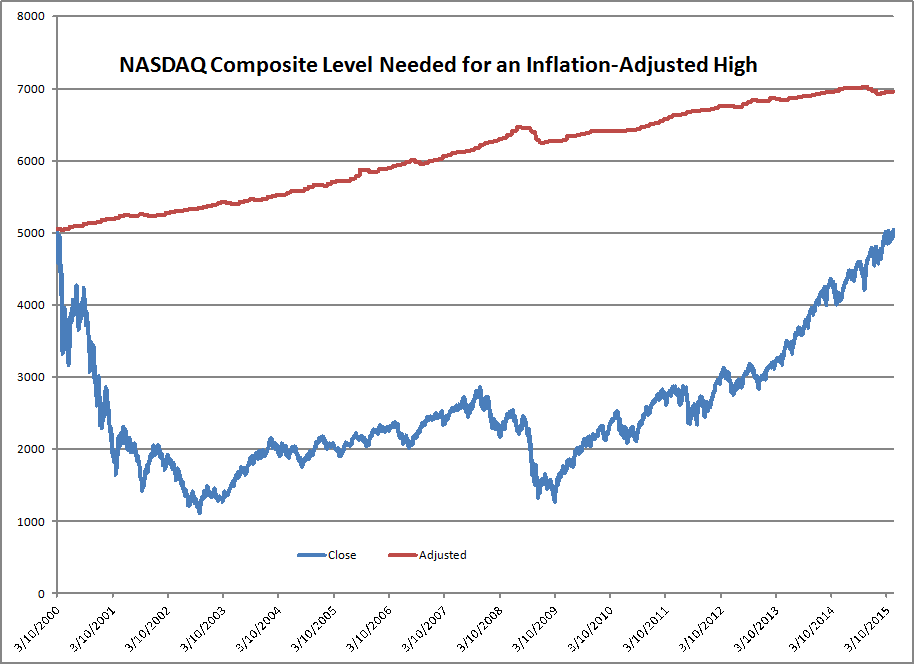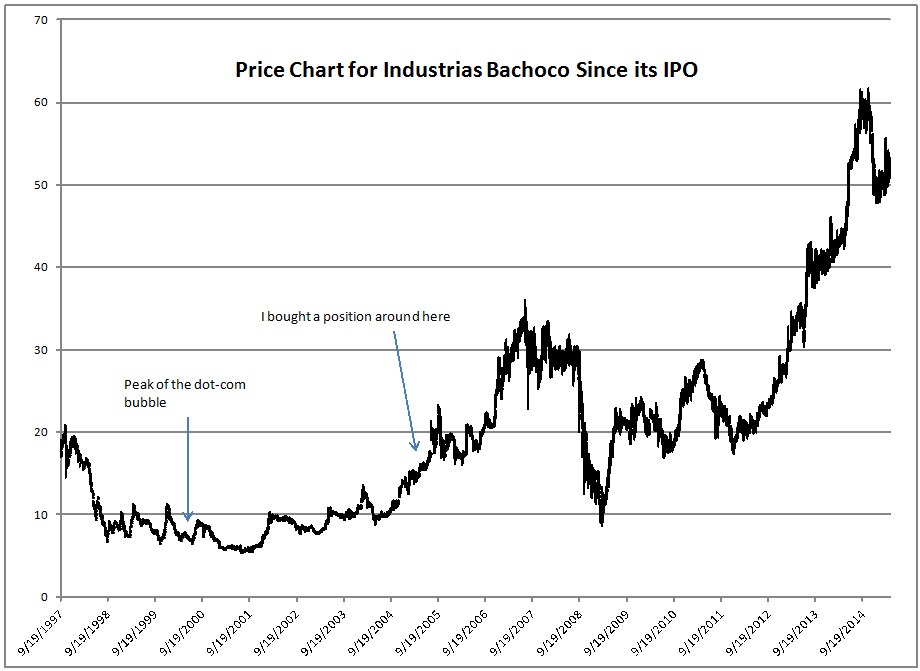Learning from the Past, Part 4

Welcome back to this irregular series where I go through the large blunders that I have committed in my investments. ?Let’s start with an unusual one: a telecommunications partnership.
In the late ’80s the US government allocated some telecom spectrum via a lottery process. ?I had some friends that participated in the first lottery, and received a decent amount of valuable spectrum. ?The only thing they had to do was have the engineering documents drawn up, which a third party consultant did. ?I said to myself that if it ever came around again, I would try to participate.
In the early ’90s, lo and behold, a second lottery with the same rules. ?I invested enough to gain a 30% interest in a partnership that would be going after the center of the US, ignoring the east and west coasts. ?I had seven partners with 10% interests, and they elected me to be the lead partner. ?So far, so good, right?
Well, seemingly. ?The thing is, why should the government allocate spectrum by lottery? ?Shouldn’t they sell it off to the highest bidder? ?After all, that’s what most people did with the spectrum they received in the first lottery. ?(I was planning on trying to create an operating company.) ?Shouldn’t the US government cut out the middlemen, and receive more for a valuable and somewhat limited asset?
Prompted by the telecommunication firms, who preferred having fewer and larger?auctions rather than buying from a bunch of disparate individuals, the US government acted in its own interests, and cancelled, even after all of the lottery participants plans had been approved.
In the end, we got back our fees from the government, but lost the money that we spent on engineering documents. ?After writing off the losses, it was a loss of 50%. ?That said, I also lost any profits from investing the money in stocks over the eight?years that the money was tied up. ?(The promoter that did the engineering documents went into hiding, having lost their shirts in the process, with a lot of annoyed people that bought their services.)
Small Cap Value Forever!
So what was I doing in equity investing in that era? ?Small cap value — little companies trading at bargain prices. ?Of all the managers that I interviewed when creating the multiple manager funds for my employer, I found the small cap value guys to be the most business-minded and interesting. ?A few of us at my firm would research out lesser known companies and?share the ideas. ?We had some fun with it. ?We would occasionally say to each other, “Small Cap Value Forever!”
Now, when the dot-com bubble came around, I was not tempted to play in that area of the market, but I fell into a lesser version of the same trap here. ?I started doing this just as small cap value’s period of outperformance was ending, and growth was taking over.
So how did I do? ?Not that bad… Small cap value lagged the S&P 500 by about 5%/year over the time I was focused on it, and I was able to beat the S&P 500 by a little bit. ?Not the greatest, but not the worst, either. ?In the process, I ran into a number of bizarre situations that taught me a lot, particularly with the smallest companies that I invested in.
In one case, I made the mistake of entering a market order to initiate a position. ?(Accident: I typically only use limit orders.) The stock was so thinly traded that I got filled at levels an average of 50% above where the bid was. ?The price promptly fell back to where it was prior to my purchase. ?Adding insult to injury, management ruined the place, and the price fell by over 80%. ?I looked at the situation, thought the assets were worth far more, and submitted a bid to an institutional investor to buy out his entire stake (and I would become a 5%+ holder of the company — I had to ask my compliance area if I could do that, and they were bemused at the odd request, and assented.) ?The investor did not take my bid, but held on, and the?management announced a buyout for the company at a level that would have given me a significant gain had I been able to buy the block of stock, but instead left me with a 80%+ loss on a small position, which wasn’t large enough to consider filing for appraisal rights.
Then there was one that went very well, but taught me the wrong lesson. ?A few weeks after I bought a stake in a small electronic parts company, Corcom, another company bought it for cash. ?At first I was happy with the quick and sizable win, but then I realized that I might have done better over time if the company hadn’t sold out.
That said, I noticed how wide the arbitrage spread was on the deal, and the annualized rate was 40%/year. ?I bought more and more of it, and eventually even used leverage to goose returns (this doesn’t sound like the older me, right? ?Right.) ?I made a lot of money in the process when the deal completed.
Here’s the wrong conclusion I drew: small deal arbitrage was lucrative and easy. ?I started doing that exclusively for two years during 1998-2000. ?During that time I learned:
- It’s not easy. ?Small deal arbitrage investing is like investing in high yield bonds where the management teams have disproportionate opportunity to act against the interests of owners.
- It’s not as lucrative as it looks, either. ?One deal gone wrong will eat the profits of ten that go right.
- It takes a lot of time to find, analyze and compare new deals. ?I spent much more time on that than when I was doing value investing. ?I felt my time with my family was suffering.
More deals went bad than should have. ?My credit analysis on the deals was subpar. ?I particularly remember one where the buyer used an obscure clause to get out of the deal, and the company, Advanced Technical Products, took the acquirer to court and lost.
After the loss in court, I sold for a 70%+ loss, and then insult added to injury happened again… after 9/11, the products that they made for structural purposes came into high demand, and the stock shot up more than fifteen times. ?Had I held on, I would have quadrupled my original investment. ?(I smile and laugh a little as I write this.)
What did I learn?
This was the worst two years of all my investing, so I learned quite a bit:
- Often your worst errors come trying to repeat a single abnormally large?success.
- Stick to what you know best, which for me was value investing.
- Don’t chase fads.
- Analyze management teams of small companies very carefully. ?They can potentially get away with a lot more if there are no significant controlling investors.
- Analyze your own investing to figure out what you are best at. ?I did such an analysis afterward, and saw value investing and industry analysis as key strengths.
- Focus on risk control. ?Focus on risk control. ?Focus on risk control……
- Do more analysis of unusual ways of investing before committing money.
On the bright side, this period set me for my best period of investing, which would be 2000-2010. ?The lessons and discipline learned would prove invaluable to me, and the companies that I served.










